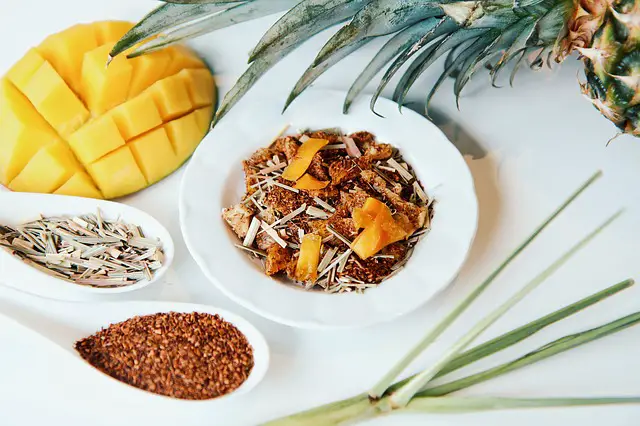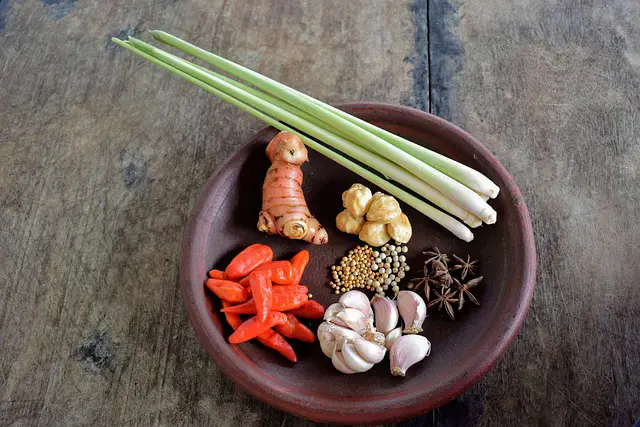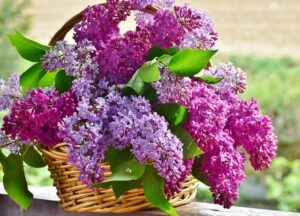How To Grow Lemongrass In Pots
Fresh herbs are a favorite ingredient in many of our recipes, and we use them often. A few of us are a little more daring and make our tea with fresh herbs. Whatever the case, we can all agree that fresh herbs provide a unique flavor to our dishes and drinks.
It is necessary to use many different-sized containers, rich loamy soil, and enough of water to keep the lemongrass wet while it is being grown in pots. It will need 6 hours of sunshine every day to maintain the plants growing in peak condition, as well as regular upkeep, fertilizing, and harvesting..
It is not difficult to grow fresh herbs such as Lemongrass. It may be gratifying, healthful, and excellent for the spirit to grow anything from scratch in your own yard! Any size container will work for growing lemongrass, which is a lemony herb that is simple to cultivate.
If you appreciate lemon tastes, planting Lemongrass in your garden does not need you to be an expert backyard farmer. Growing this great herb will provide a pleasant perfume to your house as well as a delicious lemony flavour to your food.
Lemongrass will thrive in a container.
A simple plant to produce, lemongrass is a culinary favorite. A pot or garden area of any size will be completely covered by it as it grows swiftly. Even though lemongrass grows best in tropical to mild temperate zones, you may cultivate this multipurpose plant in cooler climates with relative ease as well.
If let to grow in the ground in a flower bed in your garden, each lemongrass plant may reach a height of 3 to 5 feet (1 to 1.5 meters) and a width of up to 2 feet (60 cm).
If you do not have access to a backyard or a sufficient garden bed, growing Lemongrass in a pot, whether inside or outdoors, is an excellent alternative.
One stalk of Lemongrass is the most effective method to grow it in a pot; planting many stalks may result in an excessive number of plants, some of which will succumb to lack of room or become top-heavy and fall over.
Planting Lemongrass and other fresh herbs in pots is the most effective method to guarantee that you always have fresh herbs on hand when you need them!
When growing Lemongrass in pots, the only thing to remember is to offer adequate warmth, light, and water for the plant to flourish, and to trim and harvest the plant on a regular basis.
How to Grow the Best Lemongrass in the Best Containers
A 5-gallon (22 liter) or bigger container with a minimum diameter of 14 inches (35 cm) is the best size for growing Lemongrass. When it comes to growing lemongrass roots, they require plenty of room to spread out and expand in size. If you use a tiny container, the roots may break through and escape.
Of course, you might start with a smaller pot and gradually increase the size of the pot as the Lemongrass develops and expands. When planting Lemongrass on your kitchen window ledge, a large 5-gallon pot is not the best choice. However, the plant will thrive if it is split and replanted in a smaller container.
Growing your Lemongrass in a pot may be accomplished in a variety of ways, as long as the container is filled with wet, rich and well-drained soil.
When selecting a container for growing Lemongrass, keep these fundamental guidelines in mind:
- When growing a large number of plants in a pot, it is important to choose the right size for the pot. A smaller size for newly sprouted plants and a bigger one for more established plants are both appropriate choices.
- Good drainage is required in all pots.
- It doesn’t matter what kind or color you want. Lemongrass is a hardy plant that grows in almost every climate.
- If you don’t have a lot of accessible space, you may want to consider growing your Lemongrass and other herbs in a Garden Tower. Using this sort of method, you may cultivate a large number of herb plants in a little area, either inside or out.
Consequently, you may start by growing Lemongrass in smaller pots inside your house, where you can enjoy its wonderful fragrance while also benefiting from its insect repellent abilities, before repotting it outside.
As soon since you have replanted your Lemongrass in a larger pot, locate a suitable inside location for it to thrive, as once you have tasted the fragrant lemony scent of this herb plant, you will not want to leave it outside!
You should find a warm, sunny location for your Lemongrass pots and water and fertilize them on a regular basis if you’re growing them outside.
When Growing Lemongrass in Pots, follow these instructions.
Lemongrass is a versatile plant that can be cultivated practically anyplace as long as the growth circumstances are favorable. Lemongrass grows better inside in cooler locations since it cannot endure the extremes of temperature seen outside.
When it comes to starting your Lemongrass plant, there are three options to consider:
Cuttings
You should start growing your Lemongrass plants at least two months before the last frost date in your location, which is often in the spring. If you live in a colder environment, you should start growing your Lemongrass plants in the fall.
You may propagate new Lemongrass plants from cuttings in two ways: by division and by division.
If you already have Lemongrass plants growing in your garden, remove the stalks from the plants with a sharp knife, approximately an inch (2.5 cms) above the ground, and discard the leaves.
Using a growth container filled with potting soil or growing media, transplant the stalks to a new location.
Plant the stalks so that the base of the stalks is about 1 inch (2.5 cms) below the surface of the soil Maintain moisture in the soil by putting the pot in a sunny location for approximately three weeks.
Make a larger container for the Lemongrass plant and put it somewhere warm to keep it growing.
The best place to get cuttings is at your local Asian food market or grocery shop, if you don’t already have a flourishing plant at your disposal. Lemongrass stalks with green cores and bulbs that are still connected to the stalks are always the best choice.
Fill a glass jar halfway with water and submerge the Lemongrass stalks bulb-side down. Toss them in the water for a few weeks until new roots begin to appear. Keep the water fresh by changing it on a regular basis.
When the roots reach a length of around 1.0 to 2 inches, the bulbs are ready to be potted (2.5 to 5 cms).
Add some water to a pot of potting mix before filling it up. Once the plant is planted, always check to see that the pot has a few drainage holes and is large enough to accommodate its expansion.
After you’ve gently pruned off the tops of the stalks, place each one into a hole in the middle of the potting mix. Place the container in a sunny location and cover with potting mix.
9 Best Tips To Keep Birds Away From Fruit Trees 9 Considerations Before Buying A Robotic Mower How Safe Are Robotic Lawn Mowers For Kids And Pets The Best Way To Grow Organic Kiwi
The Best Way To Grow Organic Kiwi
Always plant the bulbs first thing in the morning to avoid transplant shock.
Seeds
It is quite simple to cultivate lemongrass from seeds. In a tiny pot or grow bag with a growth media such as vermiculite or potting soil, just sow the seeds to start the plant. Fill in the gaps with a sprinkle of water, making sure the medium is moist but not saturated.
If you sow the seeds between January and March, they will germinate well, with the first shoots emerging 20 to 40 days after planting. Temperatures around 60 degrees Fahrenheit are excellent for germination to take place (20 degrees Celsius).
As soon as the seeds have sprouted, you may transplant them into cups until they reach a decent size, which is around 3 inches (7 cms), at which point you can plant them into their final containers.
Divisions
The fact that Lemongrass grows in clusters makes it simple to split the plants. The bulbs may be easily broken apart with a tiny garden fork while you are digging up the plant during the harvest. In addition to having its own set of roots emerging from the bottom, each bulb-like base will also have a thin leaf fan sprouting out of the top.
For your container, you may choose and select the size of each bulb. Please remember that each bulb will grow and spread, so plant in the appropriate sized pot unless you want to keep splitting and repotting your Lemongrass every time you harvest it.
The Best Way To Take Care Of Potted Lemon Grass.
Lemongrass is a simple plant to cultivate, but it requires special attention to guarantee that it grows at its best and produces a healthy crop. Learning proper care for your growing Lemongrass plants will ensure that you always have healthy plants available for use throughout the year!
A few guidelines for taking care of your Lemongrass plants are provided below.
Whether You Want the Sun or the Shade.
To ensure that each plant gets at least six hours of direct sunshine every day, make sure that each plant receives at least six hours of direct sunlight every day to fulfill the plant’s energy demands. If your plant is currently located in the shadow and is not growing well, just bring it into direct sunshine and watch it flourish and expand.
Water
Especially after transplanting into a new pot, it’s important to keep the Lemongrass soil wet for the optimal plant development. It will survive drought after the plant has reached full maturity. Mulching the soil with a 3-inch (7-cm) layer can help to preserve moisture while also enriching the soil as it decomposes.
The morning or late afternoon are the only times you should water each individual plant. Do not water directly onto the stalks or leaves, but rather straight into the soil around the plants.
Loamy soil is ideal for growing lemongrass. When planting a Lemongrass plant, amend the soil with compost, manure, and leaf mold. When potting a Lemongrass plant, always use commercial potting soil.
Refill the soil once a year if the plant has been growing in the same container for a few years. As an alternative, repotting the plant into a new pot with fresh soil every spring will result in a stronger plant.
To give the plant an additional push, sprinkle some manure tea on the soil every couple of weeks to supply important trace nutrients.
From Zones 8 to 11, lemongrass thrives.
Fertilizer
Fill the container halfway with a slow-release fertilizer, such as 6-4-0 fertilizer, to ensure that the plants are well-fed during the growth period. Nitrogen-rich fertilizer is required for grassy plants such as Lemongrass.
Infrared and infrared thermometers
Citrus aurantium (lemongrass) is a tropical plant that thrives in hot, humid environments. When growing it outside in a container, it is quite vulnerable to frost, so bring your plants inside to overwinter before the temperature drops below 40 degrees Fahrenheit (4 degrees Celsius)
Elimination of weeds Lemongrass, like other plants, will not thrive if it is forced to compete with other plants for space and nutrients in the soil. Keep the area surrounding your Lemongrass free of any undesirable plants and weeds on a regular basis.
Good pruning is important for Lemongrass plants that survive for more than one season, since they will profit from it. It is essential to remove the dead leaves from each plant in order to encourage the production of an abundance of stalks. Pruning should be done 5 to 6 months after planting, with a second pruning session after a year in most cases.
The absolute ideal time to trim your Lemongrass plants is towards the end of winter or at the beginning of spring, when they are in their resting stage.
Make a slit in the stalk with a sharp knife, leaving approximately 6 inches (15 cms) of stalk above the soil. The stalks should be free of any dead grass, so remove it all.
When the temperature warms up again, lemongrass will soon recover and produce new shoots.
Harvesting
Whatever the season, harvesting takes place every six months on average. In order to give it a more earthy flavor, lemongrass is often not picked until each plant reaches its full size, although it may also be harvested when the plants are still young.
Individual stalks with their roots should be removed from the cluster using a hand trowel or fork.
They are somewhat rough, but when sliced into little pieces, the lush green stalks make a great tea. Using the green stalks, you may make a delectable soup for dinner.
Toss away the harsh outer white leaves off the stalk, since they are too difficult to consume, and slice the soft white stalks to use in your cooking instead. Following chopping, the delicate white stalks freeze nicely, and they are also tasty when mashed or minced with other ingredients.
A month’s worth of lemongrass may be kept securely in the refrigerator.
Aspects of pest control and disease prevention
In order to ensure their own life, lemongrass plants produce Allelopathy chemicals, which hinder the development of other plants.
Consider whether or not your potted Lemongrass will be a good friend to the plants in its immediate vicinity before putting it into its new location.
Some places of the world are susceptible to rust fungus, which is a disease that may kill Lemongrass. Keep an eye out for patches or streaks of brown on the leaves that indicate a problem. By merely watering the plants at the soil level, you may greatly reduce the risk of rust fungus.
In the unfortunate event that it is not addressed immediately, rust fungus will destroy your Lemongrass.
Lemongrass is quite popular with spider mites. Any plant may be killed or severely weakened by an infestation of some kind. Light-colored specks appear on the leaves and have the potential to cause the leaves to drop. Wash them off with a spray of water or insecticidal soap as soon as you see them on your plants.
Take Good Care of Yourself This Winter
Grow one bulb division in a tiny container in a warm area throughout the cooler months of the year in colder regions to maintain the plant growing throughout the winter.
Excavate and remove a few stalks that are still attached to the bulbs and roots. Each stalk should be cut down to around 5 inches (12 cms) in length and placed in a separate container for protection. Repot into larger containers as the weather warms up in the spring.
What Are the Advantages of Growing Lemongrass in Containers
The plant Lemongrass is a lovely addition to any house or yard, as we already know. It may be grown in containers, too. Growing Lemongrass in pots has a number of advantages, including the following:
When it comes to growing plants in pots, either inside or outdoors, lemongrass is one of the most straightforward.
- Pest-repelling characteristics are found in lemongrass, according to research.
- Lemongrass is a perennial plant that may be grown anywhere.
- Propagation methods include cuttings and seeds, as well as seedlings.
- Maintaining and harvesting lemongrass is a cinch.
- You’ll have an infinite supply of lemongrass if you plant it in a pot, and it has a delicious lemony flavor.
Lastly, a word about
You may be surprised at how much of a difference growing Lemongrass in pots can make. Their beauty and fragrance are enhanced by the fact that they are easy to cultivate and need little upkeep.
Lemongrass may be used in a variety of culinary applications, and it offers a plethora of health advantages. An infusion of Lemongrass tea may help with digestive problems and stomach illnesses, and it is also often used for detoxification and weight reduction purposes.
Overall, there is absolutely no reason why you should not be growing this great, aromatic, and gorgeous herb in your own backyard or on your balcony.
Is it possible to grow peach trees indoors? How can I succeed in my home business?




